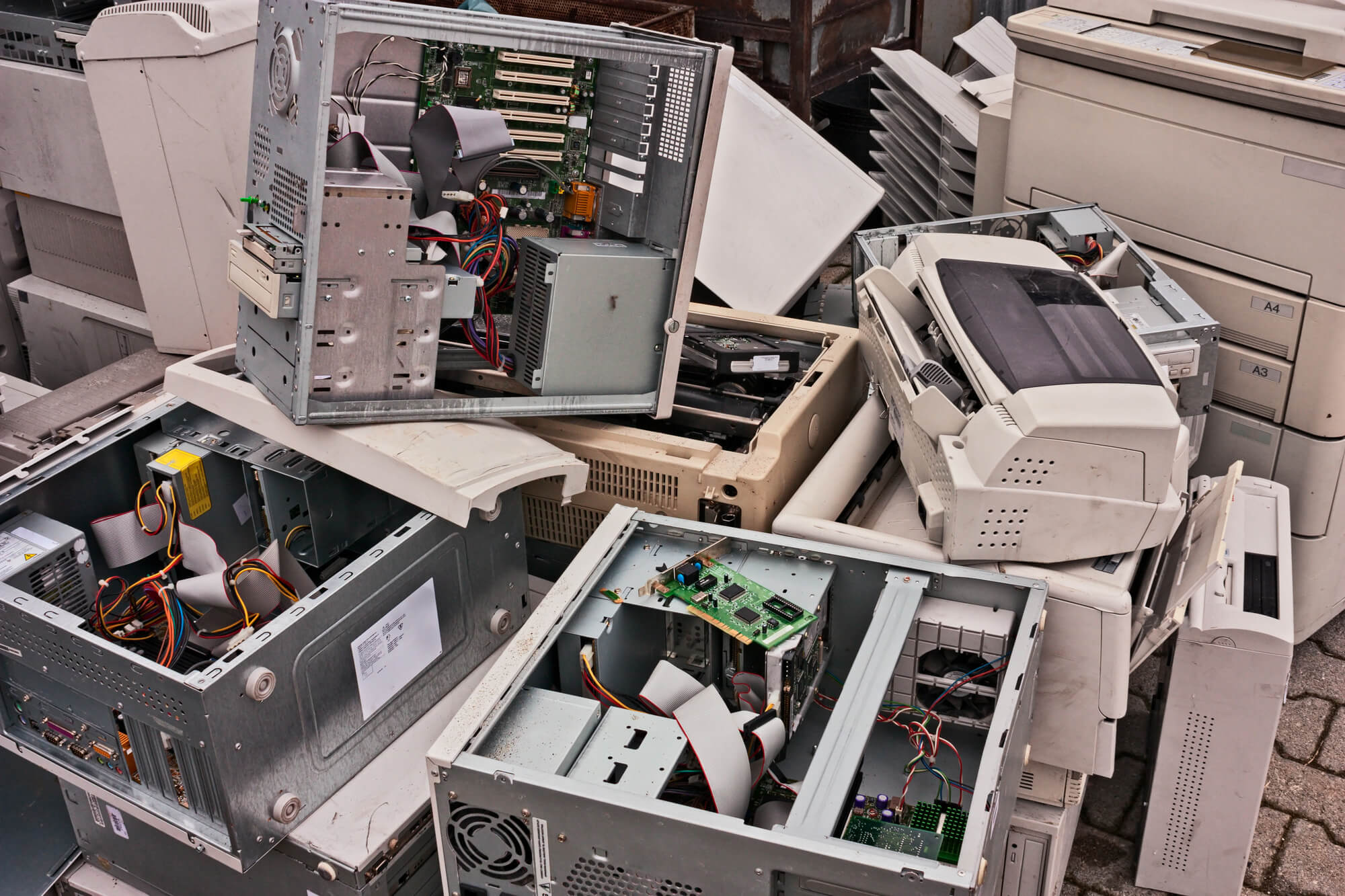Electronic items are notoriously difficult to recycle. Unlike, say, an empty bottle of milk or a cardboard box, you can’t just pop an electrical device out onto the street and expect it to be picked up with the rest of your recycling. This unfortunately means that many people decide not to recycle their electricals, leading to around 60% of e-waste ending up on landfills.

However, Waste Electrical and Electronic Equipment (WEEE) recycling is just as important as recycling non-electronic items, and whilst doing so isn’t as easy, there are still ways to get electronic devices recycled. Many of us don’t have the first idea how to go about doing this. But with over a billion new mobile phones, TV’s and laptops bought worldwide every year, it’s something people need to learn about. This article will explore why it’s so difficult to recycle such devices, why it’s important to do so, and how exactly to go about getting them recycled.
Why is it so difficult to dispose of electrical items?
Electricals are difficult to recycle because, unlike most typical household items, they contain an array of different materials. All of these components must be separated from one another in order to be recycled, and this is a complex process that requires specialist handling. It is important to recycle electronic goods as many of the materials they are made of—like metal, glass and plastic—can be reused, and are things we typically recycle.
Not only does the number of different materials make such items difficult to recycle, but many of the more unique components they are made of—such as lead, mercury and cadmium—can be hazardous. Lead exposure can cause brain damage in children, mercury can cause brain and kidney damage, and cadmium poisons the kidneys.
This makes the recycling process even more complex, as these materials must be removed extremely carefully due to the health and safety risks. The dangers of these items means they shouldn’t simply be thrown onto a landfill (as they regularly are), as this could cause them to leach into the environment, leading to pollution and potentially harming the public.
How does electrical recycling work
The treatment of WEEE items varies from the type of device and technology that is used. Broadly, after they have been collected and transported to recycling facilities, the hazardous materials are removed and disposed of to avoid health risks. The other components are then separated so they can be recycled and used in new products. Initial shredding of the items facilitates this, before the plastics are separated from the metals and the internal circuitry.
A magnet attracts the iron and steel from the material stream, which is largely plastic, before the copper, aluminium and circuit boards are separated. The aluminum, copper, steel and circuit boards are then collected and sold as recycled commodities. Water separation technology is also used to separate glass from plastics.
Some electronic items have separate components that need to be handled differently. For example, cathode ray tubes, usually found in old televisions and computer monitors, are more difficult to recycle. This is because toxins (including lead) found in CRT’s are among the most dangerous, and the monitor body must first be separated so the CRT can be removed from within. Fluids contained in some appliances, such as freezers and fridges, must also be removed prior to shredding.
Where can I recycle my electronic devices?

As part of our services here at Clearance Solutions, we offer IT and WEEE disposal. Our service is a sustainable, convenient and cost-effective way of disposing of your electronic goods. We will not only collect and dispose of your electronic items for you, but we strive to have as many of these recycled as we can. If they can’t be recycled, we will make sure that they are processed in the most environmentally friendly way possible. We will provide you with an Environmental Report to show you exactly how much CO2 was saved through the reuse of your items, and will take into consideration the resale value of these items in the price we charge you, saving you money.
If you’d like to recycle your old phones and computers yourself, there are two ways to do this. Under the WEEE directive, all retailers must provide their customers with a way to dispose of their electrical goods when they sell them a new version of that product. Get in contact with your retailer to arrange this. Alternatively, you could take these items to your nearest local recycling centre.











